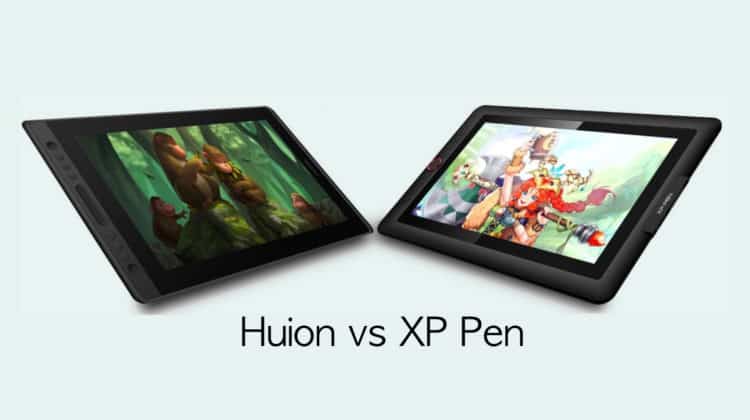
Graphic or drawing tablets, like many other devices, have seen a great deal of innovation as a result of advancements in technology. It’s become difficult to pick the ideal model from among so many different brands because of each model’s wide variety of features. If you’re torn between XP-Pen vs Huion because of the pricing and feature disparities, this comparison will help you make a sound buying decision.
XP Pen vs Huion: Pros and Cons
Before we compare the features and functionalities of XP Pen vs Huion, let’s take a quick glance at their respective pros and cons.
Huion
Pros:
- High sensitivity with support for up to 8192 levels of pen pressure
- Several keyboard shortcuts
- Affordable
- Light and rechargeable
Cons:
- Restrictive compatibility
- Drivers may pose an issue
- Not entirely wireless
XP Pen
Pros:
- Relatively inexpensive
- Many shortcut buttons
- Replaceable pen nibs
Cons:
- Smaller screen
- Complex setup
XP Pen vs Huion: Features Face to Face
In terms of features, both tablets are equally impressive. However, certain drawbacks should be considered as well. As you’ll see in the following sections, our goal is to walk you through the most essential features of both manufacturers’ graphic tablets.
Display and Resolution
Between 4-inch to 22-inch displays, XP-Pen and Huion have a variety of models to choose from. Tablets with good screen quality, bright images, and accurate color reproduction are available from the manufacturers. They often use IPS displays with a 178-degree viewing angle on their drawing tablets.
The premium glass keeps dust from building up on the screens of XP-Pens. Anti-glare optical films are also included with these kinds of displays as a means of shielding your eyes from glare and protecting the display from damage.
Using full-laminated displays from both companies provides low parallax. More durable and better picture quality, these displays are easier on your eyes. Only in its most costly models does XP-Pen employ this technology. Huion, on the other hand, uses it in nearly all drawing tablets.
Concerning the paper-like feel, which one wins between XP Pen vs Huion? XP-Pen, in our opinion, does a superior job here. The Deco 01 V2 model from XP-Pen has a more “papery” sensation to the touch.
Both XP Pen and Huion’s current tablets feature a resolution of 5080 LPI, which is the maximum possible. Because of this, even their cheaper models convey your artwork appropriately. As a result, you have the freedom to select a model from any manufacturer. But if you want a tablet that can display your drawings as realistically as possible, you may choose the Huion Kamvas Pro 16 or the XP Pen Artist 12 Pro.
Usability
There are a lot of useful features on each of these drawing tablets from these two different manufacturers. With these, you can do anything from 3D modeling to calligraphy to photo editing to — of course — drawing. The companies have a wide variety of products to meet the demands of both professionals and amateurs alike.
Some XP Pen versions do not have any shortcut buttons, even though drawing tablets from both companies come with a minimum of six customizable buttons.
In addition to the customizable buttons, XP Pen graphic tablets have two extra buttons on the side to control the display’s brightness. And several XP Pen models come with LED lights on the corners of the screen, making it easier to draw in dim light.
Huion models, on the other hand, include a locking capability for their pen displays so that they don’t switch on accidentally due to accidental button presses. It is also possible to control playback and adjust the volume level on some models, enhancing video editing. The ability to listen to music while painting is also a fantastic perk.
Our verdict is that Huion’s major features aren’t as good as XP Pen’s.
Pressure Sensitivity
Models from both brands offer pressure sensitivity ranging from 200 to 266 RPS on their tablets. Note that most XP Pen drawing tablets have lesser pressure sensitivity than what the company claims to have on its website. As a result, Huion models have superior pressure sensitivity than XP Pen models.
Pens/Stylus
A non-slip, flexible grip is a standard feature on both manufacturers’ pens/stylus. They may completely replace a mouse when linked to a PC or Mac. Depending on how they are adjusted, they may be used as a brush, pencil, or marker. Each supports a maximum of 8192 pressure sensors and 60° tilt support. Shades may be easily added, and the tiniest lines can be easily made.
Tablets made by XP-pen include a stylus with a hexagonal form, which is thin and long like a pencil’s. In addition to one or two configurable buttons, they also have a one-click switch to switch between pen and eraser functionalities. It is also important to note that XP-Pen styluses are produced using eco-friendly materials.
All Huion tablets come with styluses that don’t have batteries, allowing for uninterrupted sketching. These pen styluses are thicker and shorter than XP-Pen styluses.
The XP-Pen stylus is best for pencil artists. In contrast, the Huion stylus is better suited for people who prefer writing with a pen instead of a pencil or pen. Battery-free styluses aren’t available for all XP-Pens, which might cause some trouble. The XP Pen Artist 22E Pro, for example, offers a rechargeable pen. The Huion Kamvas Pro 16, on the other hand, features a battery-free stylus that enables prolonged sketching.
Software
Both manufacturers do a satisfactory job of providing the most up-to-date and necessary drivers. To keep their tablets abreast with current applications and operating systems, tablet owners may utilize this to modify their devices. The drivers for some Huion tablet types must be installed individually, though. For software and driver compliance, XP Pen has the upper hand.
Connectivity
Both companies’ graphic tablets are generally compatible with Mac, PC, and Android, making them a well-rounded option for a wide range of users. Both include a Type-C USB port that makes it easy to plug and play.
USB and HDMI connectors are standard on most of these two companies’ drawing tablets. However, if you compare the two, Huion’s 2.4G USB receiver allows wireless tablet use. In contrast, XP-wireless Pen’s connection allows for wireless tablet operation. For instance, the XP Pen Star 06 is a superior tablet for wireless communication than the Huion Kamvas Pro 16, which only has USB and HDMI connectors.
Shortcut Buttons
Customizable shortcut buttons are the most significant distinction between Huion and XP Pen tablets. A drawing tablet’s design is mainly influenced by its size rather than its maker. However, there are a few critical variances in design.
Smaller variants like the Artist12 from XP Pen have a touch bar, while Huion’s small models like the Kamvas 13 have buttons. A touch bar from Huion replaces the configurable dials of the XP Pen.
The customizable dials on the XP Pen Pro versions come in handy and make a ‘click’ sound as you turn them. They help in the fast selection of brush size while drawing. There are fewer buttons on drawing tablets without displays; the cheapest XP Pen and Huion variants don’t have any.
Also Read: Huion vs Wacom: Which drawing tablet brand is best?
Recommended XP Pen Tablets
Here are two of the best XP Pen tablets that we recommend:
XP-Pen Artist 13.3 Pro
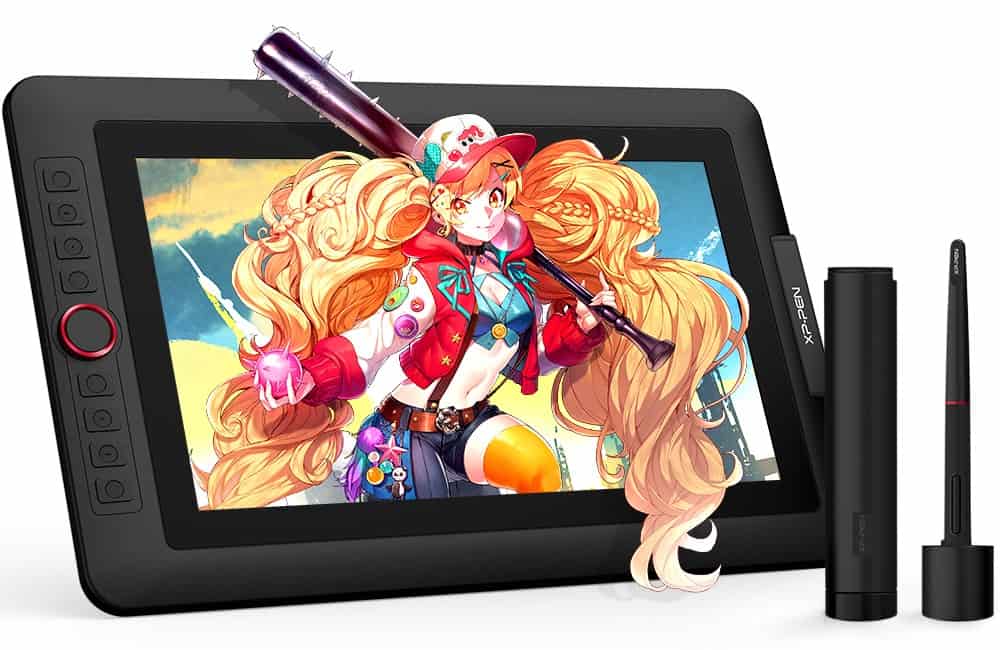
You can expect an immersive and precise sketching performance with this model of the XP Pen. The Artist 13.3 Pro from XP Pen features eight customizable shortcut keys, giving users greater control over operating.
We were immediately drawn to the full-laminated technology. Blending screens and glass provides an excellent sketching experience that is visually pleasing. Additionally, it’s devoid of parallax, allowing users to produce precise strokes for more remarkable outcomes.
A tilt feature of 60 degrees is also supported, enabling a more organic and seamless shift between strokes to be achieved. This, of course, aids consumers when drawing.
A 1080p resolution with a 178-degree viewing angle helps generate bright colors and stunning details, as well. In this way, designers can express themselves in a variety of ways.
In addition, a battery-free pen with up to 8192 pressure sensitivity levels is included for creating the finest drawings and lines with greater performance and precision.
XP-Pen Artist 12
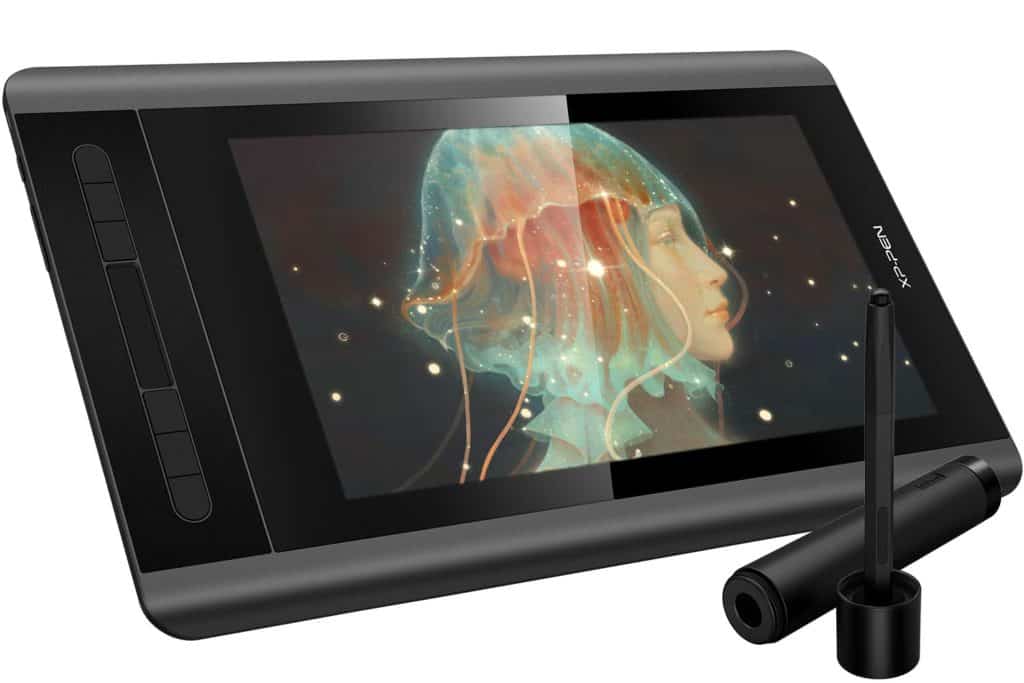
Also incredibly useful, the XP Pen Artist12 features an 11.6-inch Full HD IPS display, which helps to bring out the most in your artwork.
For the price, this drawing tablet provides a lot of value. Starting with its compatibility with Mac and Windows, users may produce their art in the same way, regardless of the platform they use.
Users may perform a broad range of operations because of its compatibility with well-known applications like Photoshop. With its distinctive hexagonal form, the battery-free pen provides excellent productivity, convenience, and a technological sense for the best outcomes possible. Also, it comes with eight replaceable nibs that the user may select to meet their specific writing demands.
A 1080p HD IPS panel on the display allows users to see their artwork in all its glory, with incredible clarity and a wide range of color and contrast. A 1-year guarantee and lifelong technical assistance from the manufacturer prove the company’s confidence in its products.
Also Read: XP Pen vs Wacom: Which drawing tablet brand is better?
Recommended Huion Tablets
Here are two of the best Huion tablets that we recommend:
Huion Kamvas 13
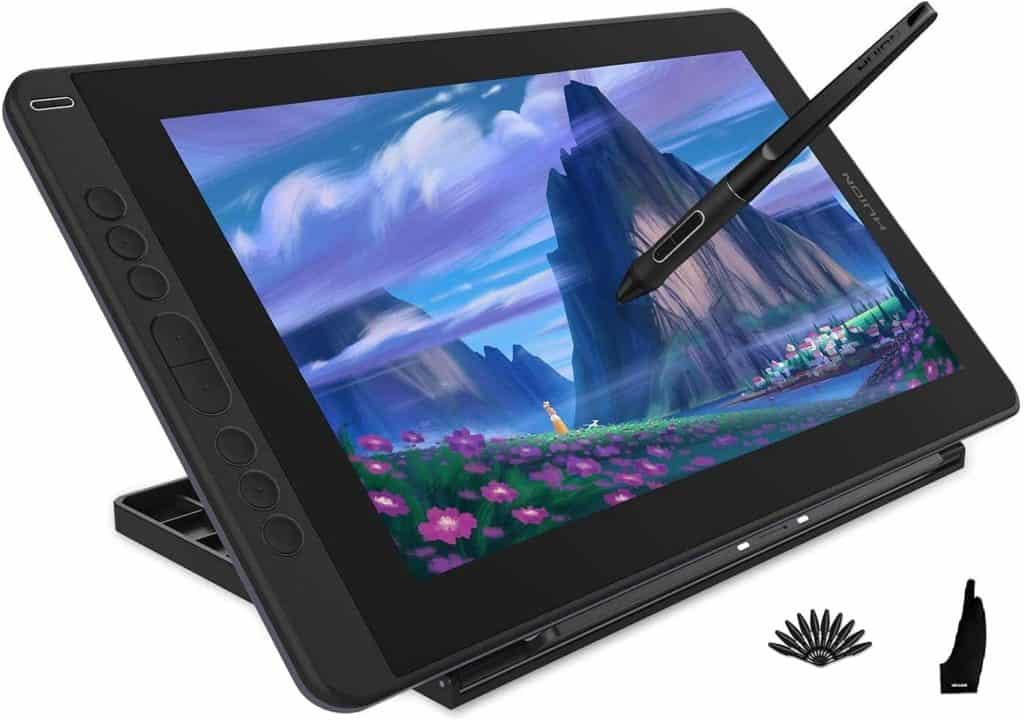
Huion is renowned for its high-quality drawing tablets, and this variant is among the best in the company’s catalog. A more natural sketching experience uses full-lamination technology that combines glass and screen.
It has a scratch-resistant display to keep users from being bothered by glare. Designers can see their work in full color and depth thanks to the 1080p Full HD display and 178-degree viewing angle.
As an added bonus, the pen that comes with the gadget has a sensitive pressure sensor, allowing for lightning-fast pen movements. The 266pps report rate guarantees a more realistic pen performance and improved precision.
Huion Kamvas Pro 24
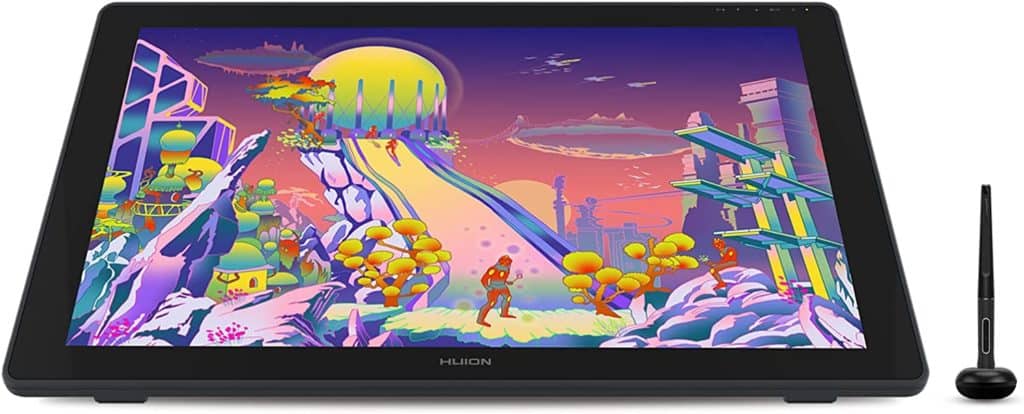
Another high-quality display pen worth mentioning is the Huion Kamvas Pro 24. Users can see every part of their work precisely and passionately. The device features an enormous 23.8-inch screen and has an adjustable stand. As a result, users can be assured of solid and dependable functioning.
In addition, the pen technology has been updated to provide for a more genuine sketching experience by appropriately capturing the compressive force. The device also has 60-degree organic tilt detection and 8192 pen pressure for a quality experience.
The dual touch bar and 20 customizable press buttons make it easy to use for all users. The fully-laminated display not only enhances the product’s visual performance but also increases its longevity.
Pricing
Comparing the costs of the XP-Pen tablet with the Huion tablet is basically futile because these two companies have identical pricing plans that emphasize cheap versions. XP-Pen tablets are typically around $10 more expensive. The Huion H640P, for example, is less costly than the XP Pen Star 06, even though these two devices have comparable specifications.
The Verdict
This brings us to the end of our XP Pen vs Huion comparison. So which brand is better at making tablets?
In all honesty, drawing tablets by XP Pen and Huion are among the best on the market concerning performance and price. This means that if you have a limited budget, choosing a product from either of these brands would be a sensible choice.
XP Pen may be the best option for you if features are what you’re searching for. Huion, on the contrary, uses a fully laminated display in nearly all of its drawing tablets, making it a better option if you require a better screen.
We hope this information will assist you in making an informed decision about which product is best suited to your needs.

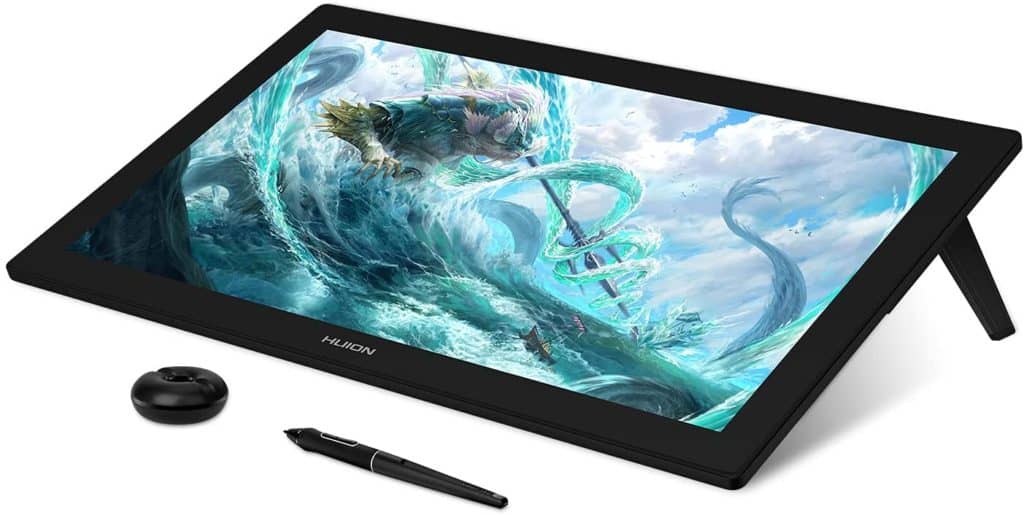
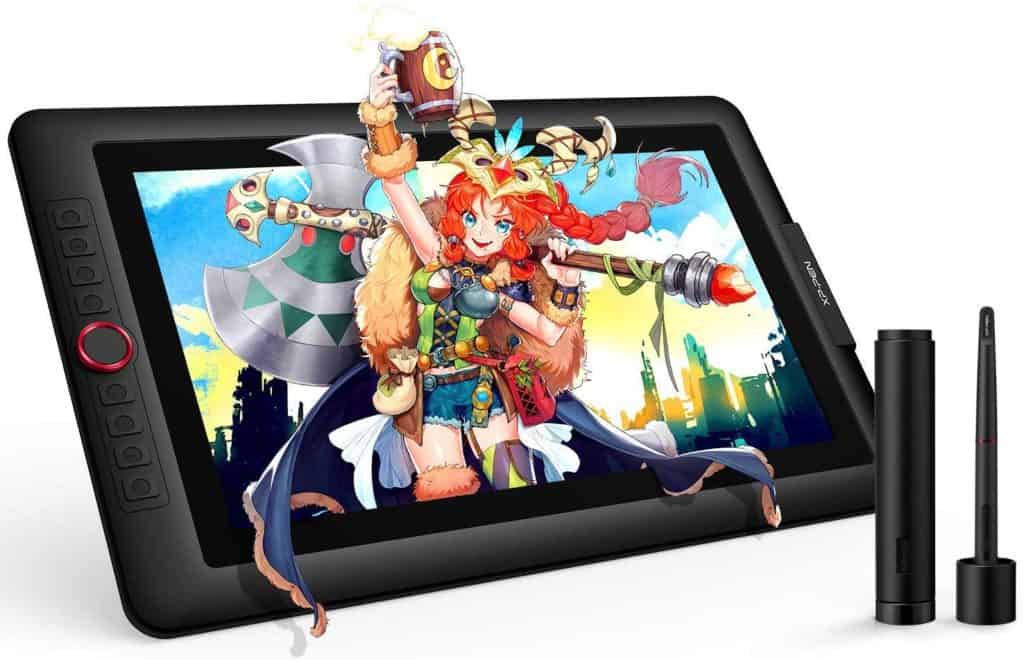
Leave a Reply